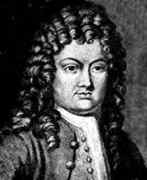Person: Taylor, Brook

Brook Taylor was an English mathematician who added to mathematics a new branch now called the 'calculus of finite differences', invented integration by parts, and discovered the celebrated formula known as Taylor's expansion.
Mathematical Profile (Excerpt):
- At Cambridge Taylor became highly involved with mathematics.
- We know something of the details of Taylor thoughts on various mathematical problems from letters he exchanged with Machin and Keill beginning in his undergraduate years.
- In 1712 Taylor was elected to the Royal Society.
- This was on the 3 April, and clearly it was an election based more on the expertise which Machin, Keill and others knew that Taylor had, rather than on his published results.
- For example Taylor wrote to Machin in 1712 providing a solution to a problem concerning Kepler's second law of planetary motion.
- Also in 1712 Taylor was appointed to the committee set up to adjudicate on whether the claim of Newton or of Leibniz to have invented the calculus was correct.
- We shall say a little more below about disputes between Taylor and Johann Bernoulli.
- The year 1714 also marks the year in which Taylor was elected Secretary to the Royal Society.
- It was a position which Taylor held from 14 January of that year until 21 October 1718 when he resigned, partly for health reasons, partly due to his lack of interest in the rather demanding position.
- The period during which Taylor was Secretary to the Royal Society does mark what must be considered his most mathematically productive time.
- The first of these books contains what is now known as the Taylor series, though it would only be known as this in 1785.
- Taylor made several visits to France.
- Taylor also corresponded with de Moivre on probability and at times there was a three-way discussion going on between these mathematicians.
- Between 1712 and 1724 Taylor published thirteen articles on topics as diverse as describing experiments in capillary action, magnetism and thermometers.
- Taylor added to mathematics a new branch now called the "calculus of finite differences", invented integration by parts, and discovered the celebrated series known as Taylor's expansion.
- The first mention by Taylor of a version of what is today called Taylor's Theorem appears in a letter which he wrote to Machin on 26 July 1712.
- In this letter Taylor explains carefully where he got the idea from.
- It was, wrote Taylor, due to a comment that Machin made in Child's Coffeehouse when he had commented on using "Sir Isaac Newton's series" to solve Kepler's problem, and also using "Dr Halley's method of extracting roots" of polynomial equations.
- Taylor initially derived the version which occurs as Proposition 11 as a generalisation of Halley's method of approximating roots of the Kepler equation, but soon discovered that it was a consequence of the Bernoulli series.
- We must not give the impression that this result was one which Taylor was the first to discover.
- James Gregory, Newton, Leibniz, Johann Bernoulli and de Moivre had all discovered variants of Taylor's Theorem.
- All of these mathematicians had made their discoveries independently, and Taylor's work was also independent of that of the others.
- The importance of Taylor's Theorem remained unrecognised until 1772 when Lagrange proclaimed it the basic principle of the differential calculus.
- The term "Taylor's series" seems to have used for the first time by Lhuilier in 1786.
- Also contained is a discussion on vibrating strings, an interest which almost certainly come from Taylor's early love of music.
- Taylor, in his studies of vibrating strings was not attempting to establish equations of motion, but was considering the oscillation of a flexible string in terms of the isochrony of the pendulum.
- Taylor also devised the basic principles of perspective in Linear Perspective (1715).
- Taylor had a highly mathematical approach to the subject and made no concessions to artists who should have found the ideas of fundamental importance to them.
- At times it is very difficult for even a mathematician to understand Taylor's results.
- The phrase "linear perspective" was invented by Taylor in this work and he defined the vanishing point of a line, not parallel to the plane of the picture, as the point where a line through the eye parallel to the given line intersects the plane of the picture.
- The main theorem in Taylor's theory of linear perspective is that the projection of a straight line not parallel to the plane of the picture passes through its intersection and its vanishing point.
- Taylor was not the first to discuss this inverse problem but he did make innovative contributions to the theory of such perspective problems.
- Taylor challenged the "non-English mathematicians" to integrate a certain differential.
- We mentioned above the arguments between Johann Bernoulli and Taylor.
- Taylor, although he did not win all the arguments, could certainly dispute with Johann Bernoulli on fairly equal terms.
- When Bernoulli suggested in a private letter that they couch their debate in more gentlemanly terms, Taylor replied that he meant to sound sharp and to "show an indignation".
Born 18 August 1685, Edmonton, Middlesex, England. Died 29 December 1731, Somerset House, London, England.
View full biography at MacTutor
Tags relevant for this person:
Analysis, Ancient Indian, Bourbaki, Geometry, Origin England, Puzzles And Problems
Mentioned in:
Chapters: 1
Thank you to the contributors under CC BY-SA 4.0! 

- Github:
-

- non-Github:
- @J-J-O'Connor
- @E-F-Robertson
References
Adapted from other CC BY-SA 4.0 Sources:
- O’Connor, John J; Robertson, Edmund F: MacTutor History of Mathematics Archive
